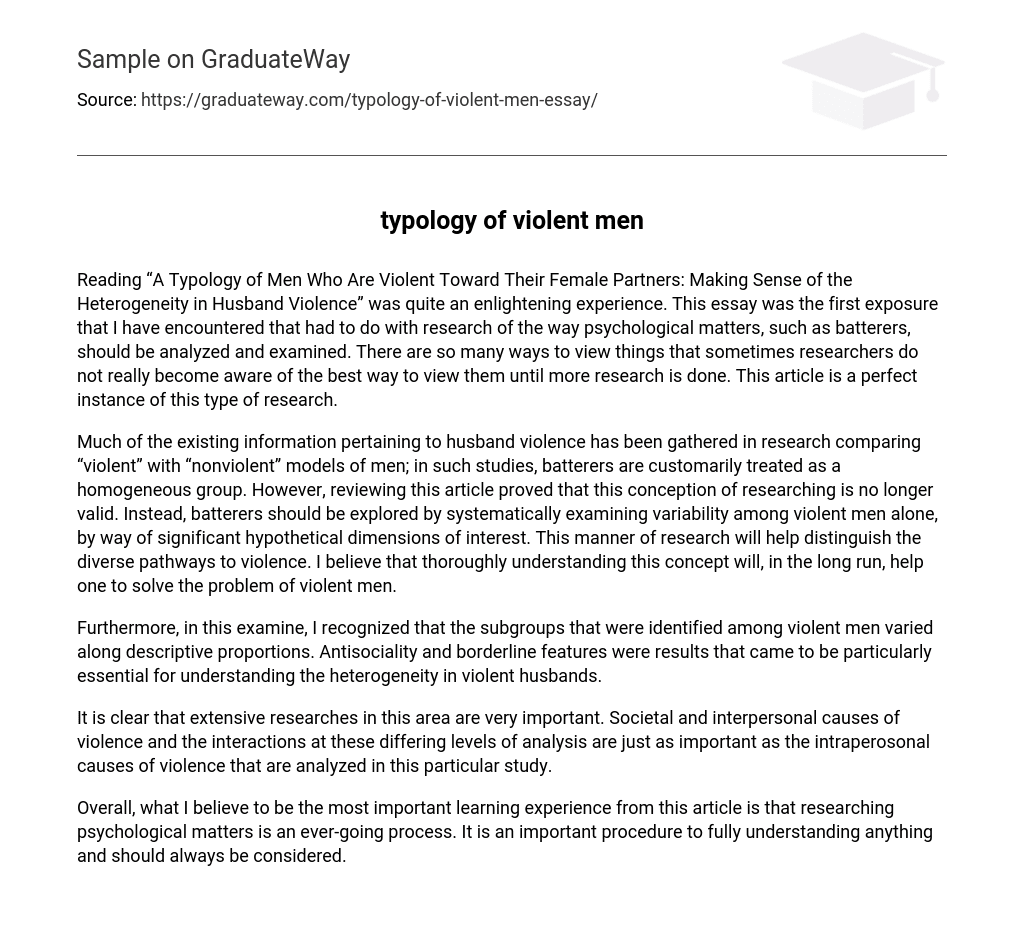Reading “A Typology of Men Who Are Violent Toward Their Female Partners: Making Sense of the Heterogeneity in Husband Violence” was quite an enlightening experience. This essay was the first exposure that I have encountered that had to do with research of the way psychological matters, such as batterers, should be analyzed and examined. There are so many ways to view things that sometimes researchers do not really become aware of the best way to view them until more research is done. This article is a perfect instance of this type of research.
Much of the existing information pertaining to husband violence has been gathered in research comparing “violent” with “nonviolent” models of men; in such studies, batterers are customarily treated as a homogeneous group. However, reviewing this article proved that this conception of researching is no longer valid. Instead, batterers should be explored by systematically examining variability among violent men alone, by way of significant hypothetical dimensions of interest. This manner of research will help distinguish the diverse pathways to violence. I believe that thoroughly understanding this concept will, in the long run, help one to solve the problem of violent men.
Furthermore, in this examine, I recognized that the subgroups that were identified among violent men varied along descriptive proportions. Antisociality and borderline features were results that came to be particularly essential for understanding the heterogeneity in violent husbands.
It is clear that extensive researches in this area are very important. Societal and interpersonal causes of violence and the interactions at these differing levels of analysis are just as important as the intraperosonal causes of violence that are analyzed in this particular study.
Overall, what I believe to be the most important learning experience from this article is that researching psychological matters is an ever-going process. It is an important procedure to fully understanding anything and should always be considered.





